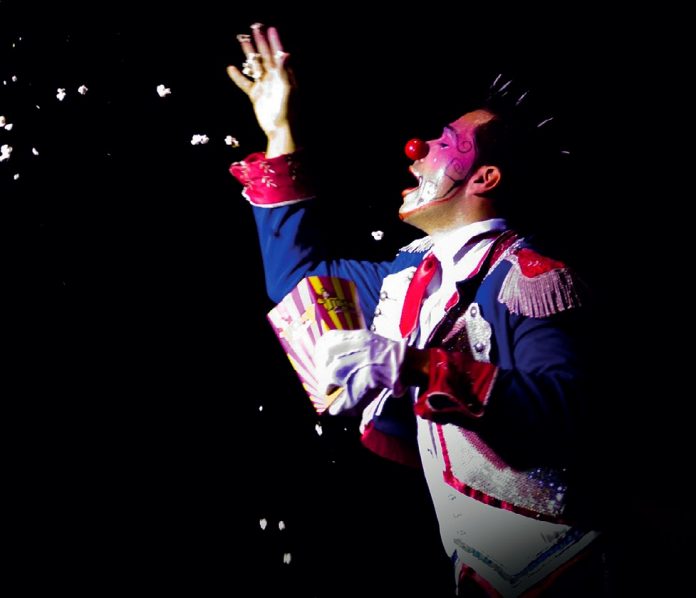Adrian Underhill and Alan Maley put spontaneity on the training agenda
In our earlier, short article (EL Gazette Issue 465, page 15), we raised the importance of putting spontaneity on the teacher training and development agenda. In this article, we address the practicalities of doing this.
It is indisputable that large areas of classroom interaction are unpredictable and thus call for a spontaneous response on the part of teachers. But how is it possible to prepare teachers for the unpredictable? We suggest that something can be done both to raise awareness of the issue, and to provide practical activities which help teachers become more ready for spontaneous responses to the unpredictable.
Raising awareness
1 We could open up discussion to more personal and wide-ranging, published accounts of teaching experiences. For example, Appel’s Diary of a Language Teacher (1995), Frank McCourt’s Teacher Man (2006), Daniel Pennac’s School Blues (2010), Sylvia Ashton- Warner’s Teacher (1963) and Eva Hoffman’s Lost in Translation (1989) all offer rich material to stimulate discussion of key issues with multiple examples of unpredictable situations and how they were dealt with.
2 We could create space for discussion of trainees’ own personal experiences, histories, key turning- points, highs and lows, and their current areas of interest and growth. Looking at the role of spontaneous, unscripted moments in the trainees’ personal narratives opens up rich possibilities for analysis and discussion.
3 We could screen videos of actual classes, asking trainees to focus on critical incidents and how they dealt with them on the wing.
Practical activities
1 Leading on from the last point, we can ask trainees to make short videos of interactive phases of their own classes, then to select moments in the video when the lesson goes “off plan”, and while viewing the video with their peers to comment aloud on how they see themselves responding to the unexpected moment. This can be followed by peer discussion on alternative strategies for meeting the unexpected, and thus a discourse of spontaneity develops.
2 Once spontaneity becomes legitimised in the training culture it provides both an event to look out for in teaching practice, and something that is introduced into their training. Sue Black (2018) remarks that, “You cannot train people for the unexpected, but you can introduce the unexpected into their training.” Here are some ideas about how we might do this in our own context: For example:
- Ask trainees to prepare a 10-minute Power Point presentation. When the time comes, disable the Power Point projector. How do they react? Followed by discussion.
- Prepare slips of paper bearing a language point (eg. ought to/must/should). Trainees draw lots. Each trainee then has just 5 minutes to prepare to present/teach their point. Followed by discussion.
- Trainees prepare a lesson plan to ‘teach’ a language point. When the time comes, they are told to exchange lesson plans with another trainee, and teach their lesson plan, with just 5 minutes to look at the plan.
- One trainee prepares a 15-minute presentation. Unknown to the presenter, you brief the rest of the ‘class’ to avoid eye contact, to remain silent if asked a question, never to smile. How does the presenter deal with the unresponsive ‘class’? This can then be followed by discussion and feedback.
3 Use simulations involving spontaneous reactions. Bafa-Bafa is a good example of a simulation which demands spontaneous responses. It involves two completely different cultural groups (e.g. two halves of the same class). Both have (quite simple) unspoken cultural practices assigned to them, and when the two groups meet, they have to try to work out, through trial and error, what the acceptable behaviours of the other group are. (For full details of the simulation, see Bafa-Bafa (http://intercultural-learning.eu/portfolio-item/bafabafa.)
4 Focusing in the importance of spontaneity and improvisation in teaching (Maley and Underhill, 2012; Underhill, 2014) highlights the insufficiency of preparation (planning) in dealing with unpredictability (preparedness). Work on Improv activities is one way in to this whole area. There are some simple to use and highly effective Improv activities in Johnstone (1989, 1999) and Poynton (2013). There is a lot of mileage, for example, in the first rule of Improv, which simply states “Accept the offer,” i.e. go with the unexpected event.
5 Another way to introduce spontaneity is by offering training in clowning. This may seem fanciful, but the personal and professional development arising from clowning training are well documented in Lutzker (2007). (See also, www.nosetonose.info/uk for practical courses on clowning.)
In this article, we have tried to offer some ways we could develop greater awareness of the need for spontaneous response in teacher training and development, and some suggestions for practical activities which might help develop this capacity.
REFERENCES
- Appel, J. (1995) Diary of a Language Teacher. London: Heinemann.
Ashton-Warner, S. (1963) Teacher. Harmondsworth: Penguin.
Black,S. (2019) All that Remains: A life in death. London: Black Swan.
Hoffman, E. (1989) Lost in Translation. London: Vintage.
Johnson, K. (1989) Improv: Improvisation and the Theatre. London: Methuen Drama.
Johnson, K. (1999) Improvisation for Storytellers. London: Faber and Faber.
Lutzker, P. (2007) The Art of Foreign Language Teaching: Improvisation and drama in teacher development and language learning. Tubingen and Basel: Francke Verlag.
Maley, A. and A. Underhill. (2012) Expect the unexpected. English Teaching Professional. No. 82, Sept. 2012, 4-7.
McCourt, F. (2006) Teacher Man. New York: Harper Perennial.
Nose-to-Nose. www.nosetonose.info.uk/
Pennac, D. (2010) School Blues. London: Maclehose Press.
Poynton, R. (2013) DO/IMPROVISE. London: The Do Book Company.
Underhill, A. (2014) Training for the unpredictable. The European Journal of Applied Linguistics and TEFL. Vol. 13, Number 2: 59-69.





